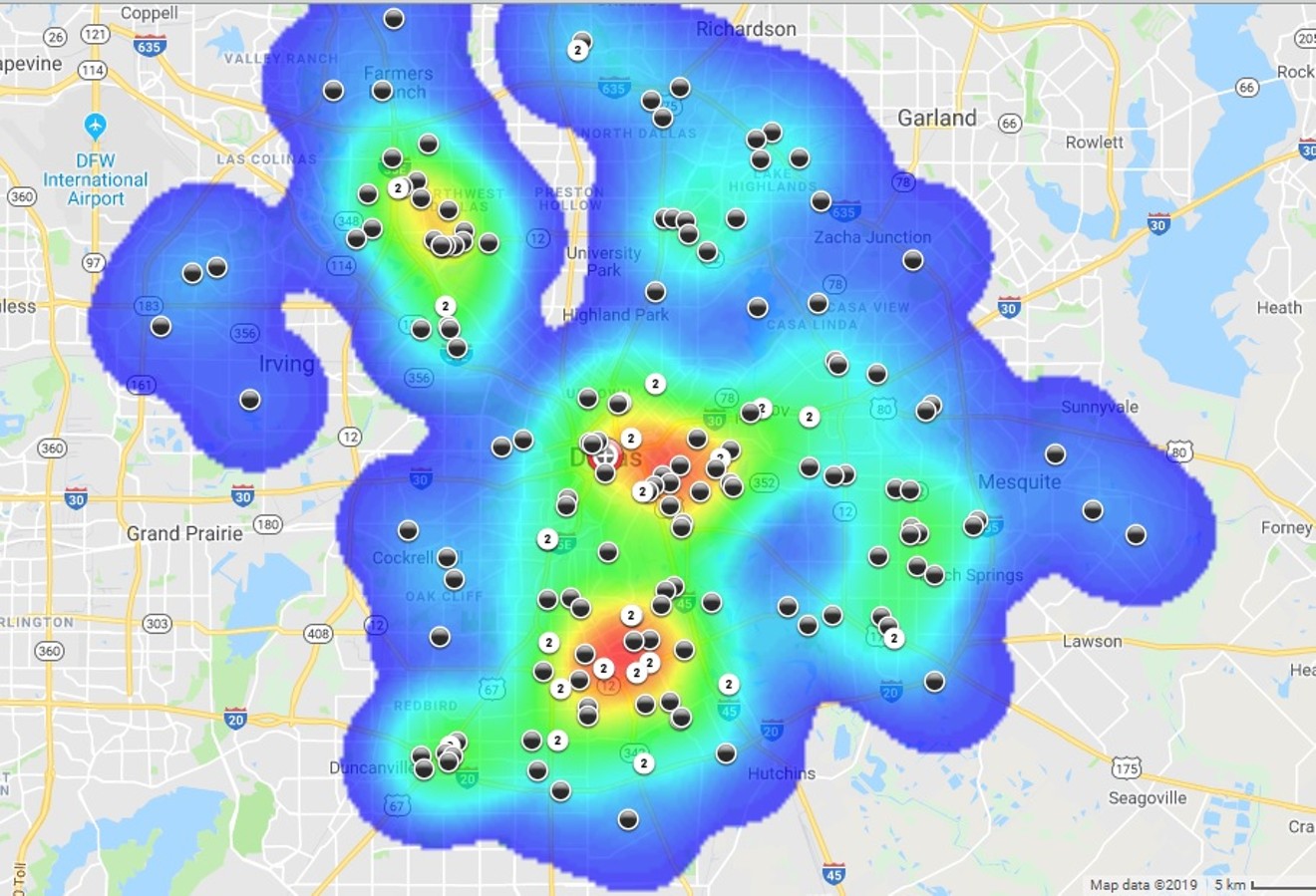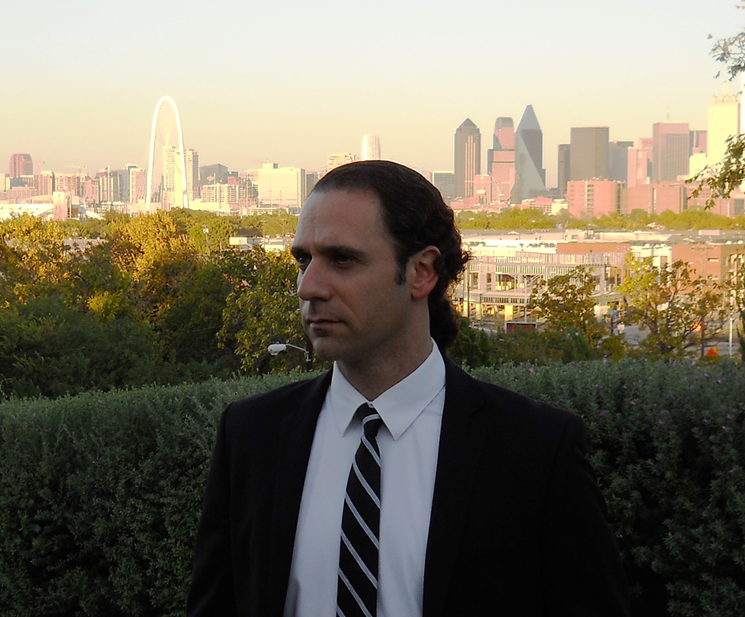But Simek never disappoints. He cited an interesting study by the Federal Reserve Bank of Philadelphia and the U.S. Census Bureau showing that gentrification does not always hammer original neighborhood residents in the ways often portrayed. It’s a thing the Andres brothers pointed out to me a decade ago when they were involved in the massive rebuilding of the old neighborhoods in East Dallas between Central Expressway and Ross Avenue.
In that kind of gentrification, people don’t really get pushed out that often. If it’s a fair and square market operation, they get bought. For a price. The reserve bank study found that the price paid in market gentrification is often better than what property owners would have been able to expect without gentrification.
The Andreses saw it with the people they and others were buying out. The people being displaced were moving out of worn-out World War II-era cottages, giving up what had been a fairly peaceful, deep-rooted neighborhood but also getting away from a lousy urban school system (now much better). They were moving to new houses with swimming pools and strong public schools in blue-collar to middle-class suburbs. There were trade-offs, not all of which were negative.
In my own admittedly anecdotal experience of it in Dallas, that scenario, the one I have just painted, takes place where there is a pretty strong headwind and where the target is fairly soft. There must be enough new people who want in and enough profit to be made to justify good prices for the original residents. And the area must hit a certain magic margin between modesty and scariness.
The people being bought out need to be of modest means so their houses won’t be worth so much money that the land can’t be blocked up easily. But the area can’t be murder city. If it is, the new higher-rent target demo will be afraid to come live there.
They were moving to new houses with swimming pools and strong public schools in blue-collar to middle-class suburbs. There were trade-offs, not all of which were negative.
tweet this
The math here winds up being deeply ethnic, in terms no one ever wants to discuss publicly. A very successful developer in North Oak Cliff explained it to me a year ago in a deeply not-to-be-quoted conversation.
“You guys always write that the artists and the gays are the original blockbusters,” he said. “You think they come in first and soften up the beach and then the big guys get the nerve to come in after.”
He said that was not untrue. It just misses a step. “The real blockbusters here,” he said, “have been the Mexicans.”
Specifically, he was speaking of undocumented Mexican immigrants. They move into very tough areas where they can afford rents, he said, like North Oak Cliff 35 years ago. A kind of tienda and church economy develops around them. They become documented, put down strong family-centered roots, buy houses and fix them up. And they form a tough, resilient barricade against crime.
You wait for that to cook. In 20, 30 years you’ve got the right conditions for an invasion. The question is what kind. The whole thing wants to go much faster now. As the market for in-town living has heated up, some of the intervening steps, like the artists and the gay people, get skipped over now.
Take for example West Dallas a couple of years ago. A few developers decided there was glamour in a fancy new bridge connecting West Dallas to downtown. You had just the right soup — a modest but stable, mainly Hispanic home-owning neighborhood. But the glamour wasn’t money in the bank yet, and the big boys didn’t want to wait. The area at the foot of the new bridge was touted as a new warehouse district for artists for about 10 minutes. Then the bulldozers moved in.
The developers were able to skip the more organic intervening phases by getting two kinds of help from City Hall. One was big tax subsidy. You might think we had enough to do with our tax money taking care of what we already have in the city, but then you wouldn’t be thinking like a well-connected Dallas developer. In time-honored tradition, they tend to regard City Hall as their own piggy bank. So people like Roger Staubach, father of a City Council member and a football hero, won huge tax subsidies for the favor of building massive new high-end apartment complexes in what had been a poor part of town.
The other kind of help was even uglier — something I wrote about a lot at the time. City Hall used the threat of eminent domain and other forms of “taking” to legally push property owners off the map as a favor to the well-connected developers.
My own favorite chapter during that time was the saga of Khraish Khraish, a low-rent landlord and honest man in West Dallas who turned out to be smarter and tougher than the back-corridor knife artists at City Hall. He’s still there, much to the consternation of the connected ones.
There is an unspoken drift here. When we say the undocumented Mexican nationals pushed somebody out and rendered areas less scary, who? Who got pushed out?
I’m sitting here looking at the murder map of Dallas, a heat map showing where homicides have been densely clustered in the last 12 months, and I would say the who is pretty unmistakable. Mainly I am looking at poor, African American southern Dallas.A couple of murders are enough to send a whole block screaming for the suburbs. People really do not like to get murdered.
tweet this
To be sure, there are murder clusters in Northeast and Northwest Dallas. But the big hot zones are in old South Dallas and in the Interstate 35, I-20, U.S. 67 triangle farther south. That’s where it’s scary.
Murder is what’s scary. In East Dallas where I live, the old yuppie urban pioneers 35 years ago were willing to put up with plagues of car burglary, tool-shed break-in and street prostitution in order to save money on houses, but a couple of murders were enough to send a whole block screaming for the suburbs. People really do not like to get murdered.
Also to be found in and near the southern Dallas murder zones are all the raw materials, the necessary ingredients for gradual gentrification and rebirth. There is good housing stock nearby, and there are rooted neighborhoods. Retail and services are not too terribly distant.
And then we have the strange, hard-to-believe promise of massive investment and development at what is now called Southwest Center Mall, a bleak concrete graveyard where the old Redbird Mall once stood at U.S. 67 and I-20. That would be great, if it worked. Something tells me, however, that important history may have been forgotten here.
The Southwest Center Mall thing feels too West Dallas. The West Dallas invasion has been able to skip some interim steps, because West Dallas was already a soft target where crime was not good but not terrible. The massive subsidies helped.
Sadly, what is happening in West Dallas is not a neighborhood. It’s a zone. The draw consists entirely of rents and amenities. It’s anti-kid as hell. The new West Dallas will never develop the roots of a community, but I’m not sure the new West Dallas gives a damn.
The southern Dallas murder zones, however, won’t work that way. Too scary. You can build the hell out of Southwest Center Mall, and nobody is going to move there and pay high rents if the area is still murder city.
The raw materials and the necessary ingredients present in that area are enough ammo for people to seize the initiative and win the war, but that process must be the much more organic one that moves inch by inch and moment by moment into the free-fire zone. No matter what anybody thinks, southern Dallas is not going to be rebuilt by Daddy Warbucks and his cronies at City Hall. They don’t know how; they lack the juice; they don’t have the guts.
Southern Dallas must be reclaimed a house at a time by middle-class squatters, stubborn, somewhat crazy people who sneak in and then refuse to leave. Many of those people are already there, but they need backup.
The tragedy of the moment is in the outcome of the recent election. The City Hall election evicted the two most effective leaders of the middle-class squatter movement, former council members Scott Griggs and Philip Kingston. They were replaced by a contingent headed by the new mayor, who is a puppet of the connected ones.
The connected ones hated Kingston and Griggs. When it comes down to it, I think they hated them because they couldn’t understand what Kingston and Griggs were talking about. It was a war of IQs, and the low ones won. Maybe it was part of a national trend.
To add to that tragedy, the old political leadership of African American southern Dallas believes devoutly in the power of the connected ones — in their money anyway — and thinks the forces of organic, middle-class gentrification are their enemy. It will all get turned the right way someday, because in the end these tides are irresistible. But it’s hell to watch right now.
What southern Dallas needs is street-by-street, house-by-house reinforcement. It needs curbs, gutters, more cops, better libraries, better storm-water drainage — all of the homely, unglamorous but very expensive things that will help ordinary people live there and push out the murderers. Southern Dallas needs patience and indomitable hope, none of which will it get from the new leadership at City Hall. Southern Dallas needs to gentrify itself and then not move to the suburbs.













